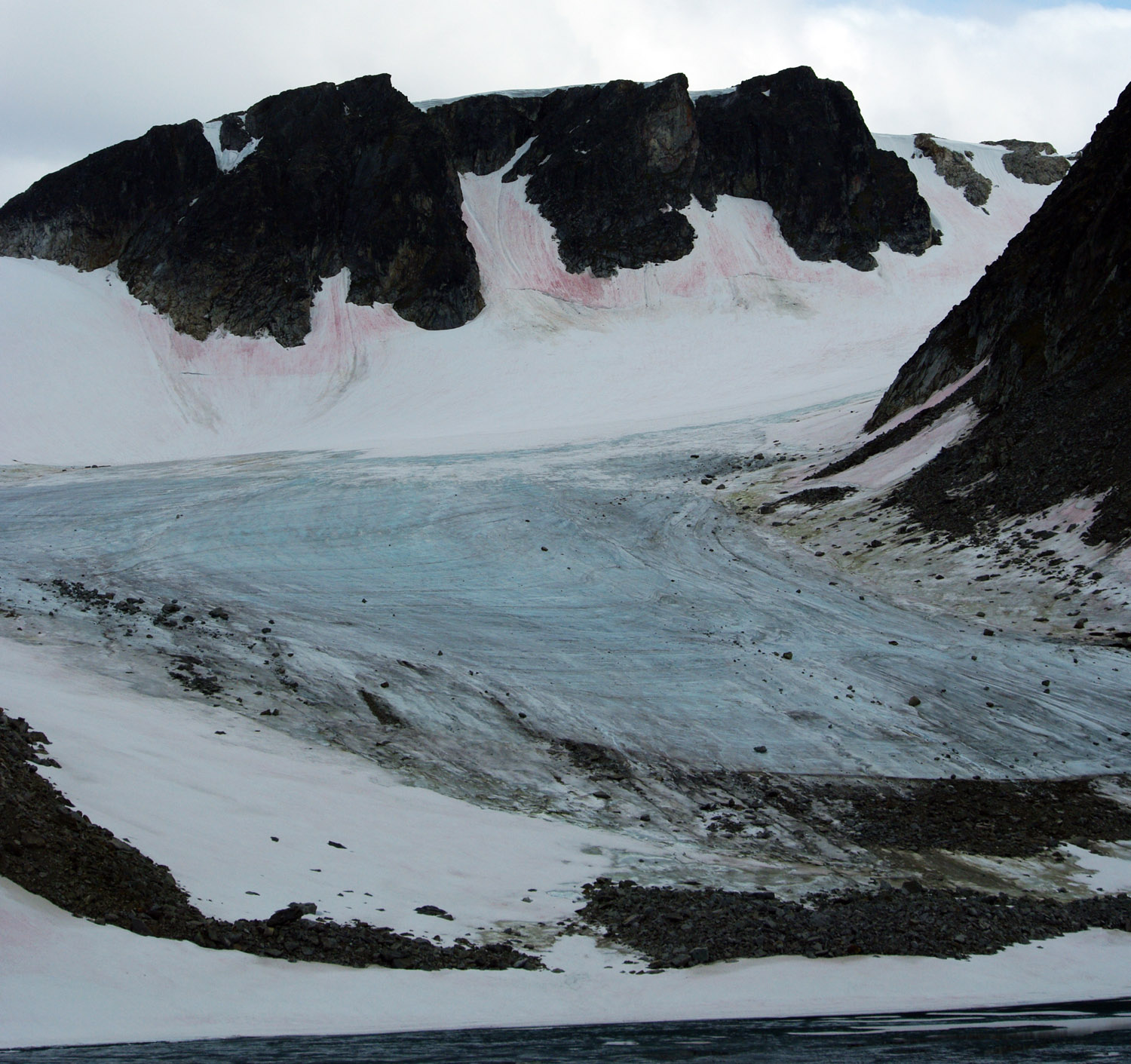Snow Algae and Glacier - Svalbard
Back to gallery | Back to Thumbs | Previous | Next
Pink snow algae growing on summer slopes. When the winter snow and ice begins to melt, water flows carrying with it dissolved nutrients. This gives the algae the boost it needs to make the most of extra energy from summer light and the relative warmth. This is a predominantly red-coloured species. There are over 300 species of such algae that live in such harsh and cold conditions. The red colour is a protective chemical (a carotenoid such as astaxanthin) that protects against the exceptionally high concentrations of visible and ultra violet light that could become harmful and destructive.
Such algae are also found in many mountainous regions across the world, where extra ultra violet light due to the thinner atmosphere and again increased light scattering by ice and snow requires protection by similar pigments.
Walking across such an area will leave behind red footprints as the algae are concentrated by the walker as the snow is crushed, and sometimes there will be a a faint smell of fresh watermelon.
Photo; © Paul Ward - These are pictures from a cruise around Svalbard inside the Arctic Circle in high summer.

